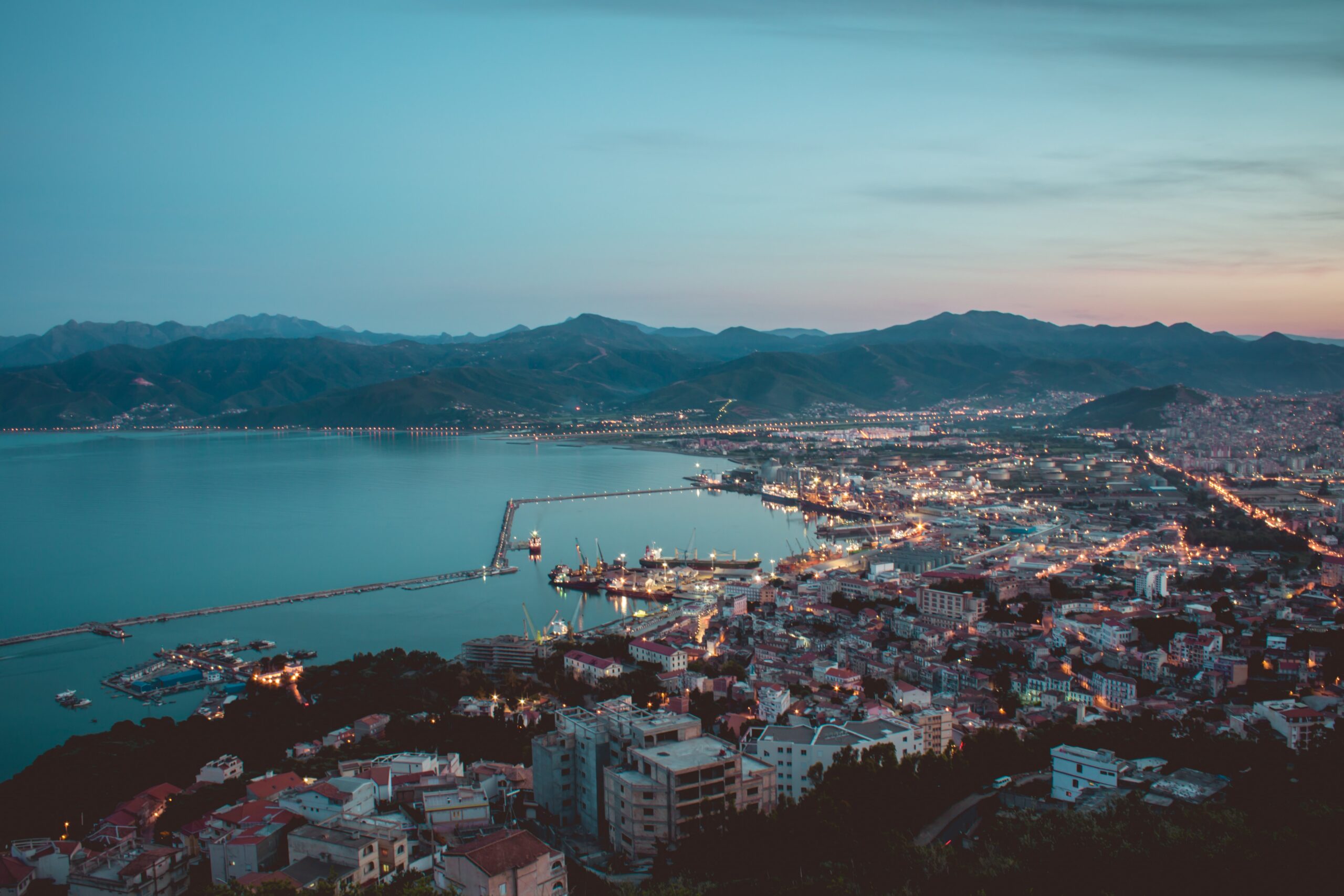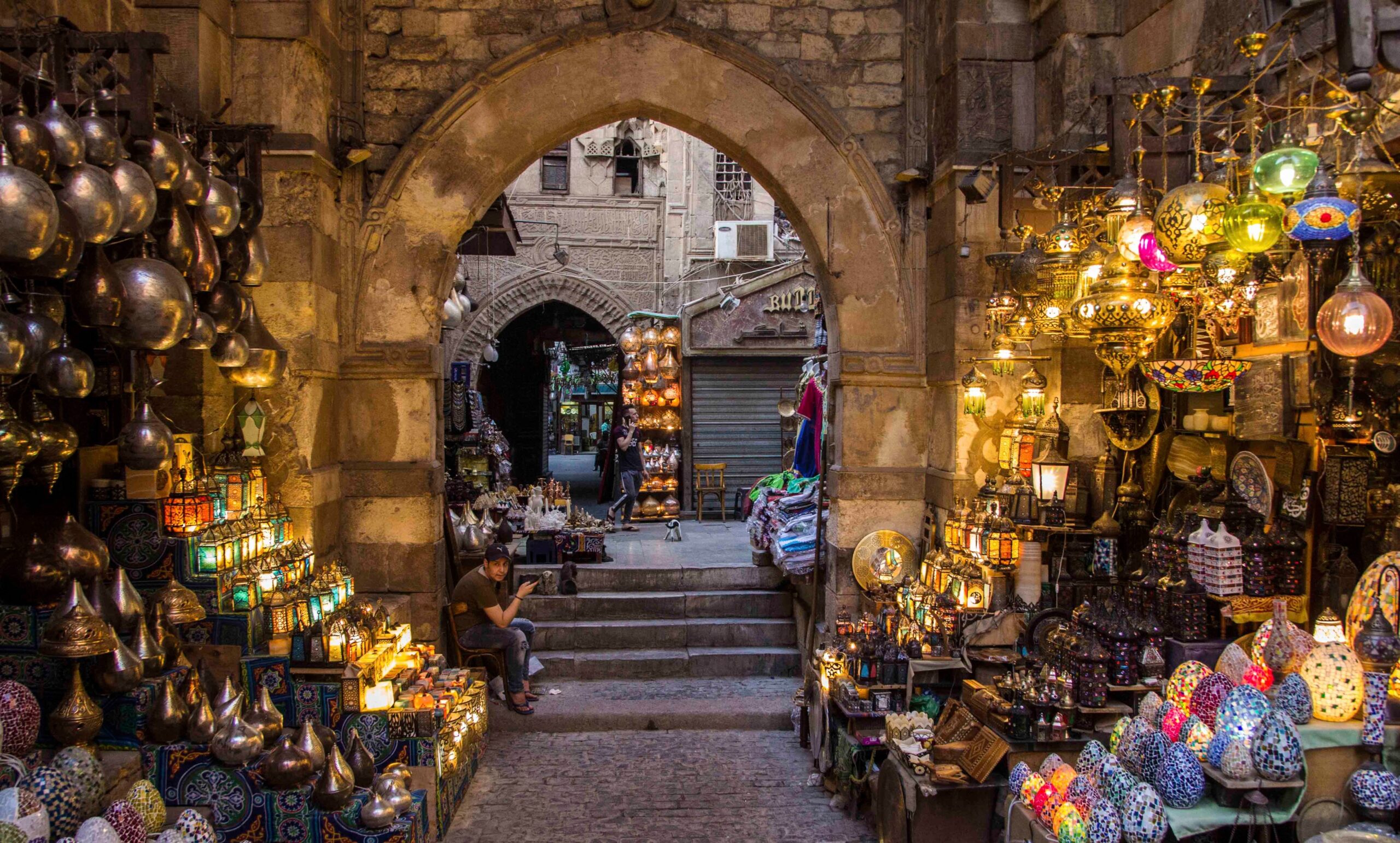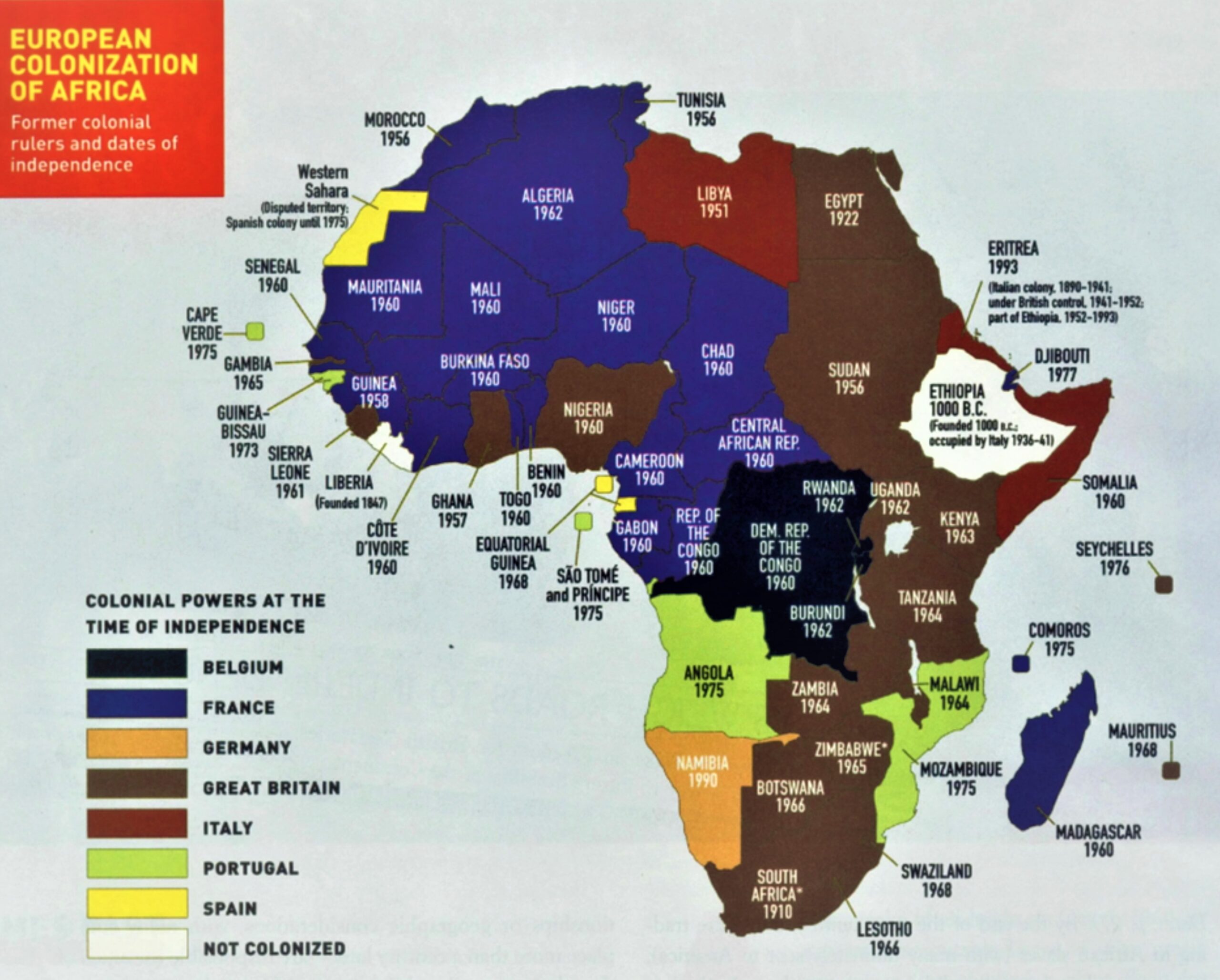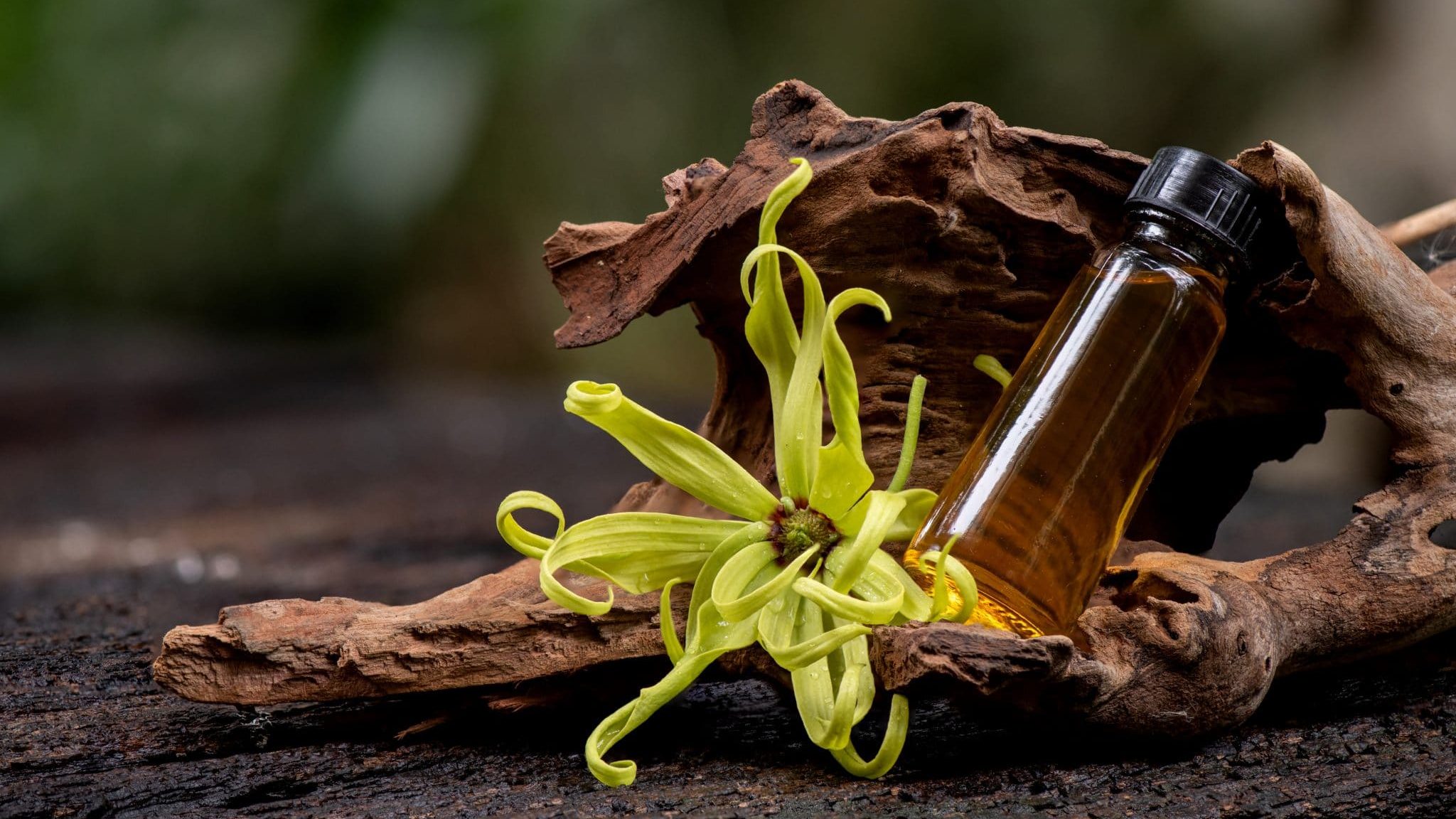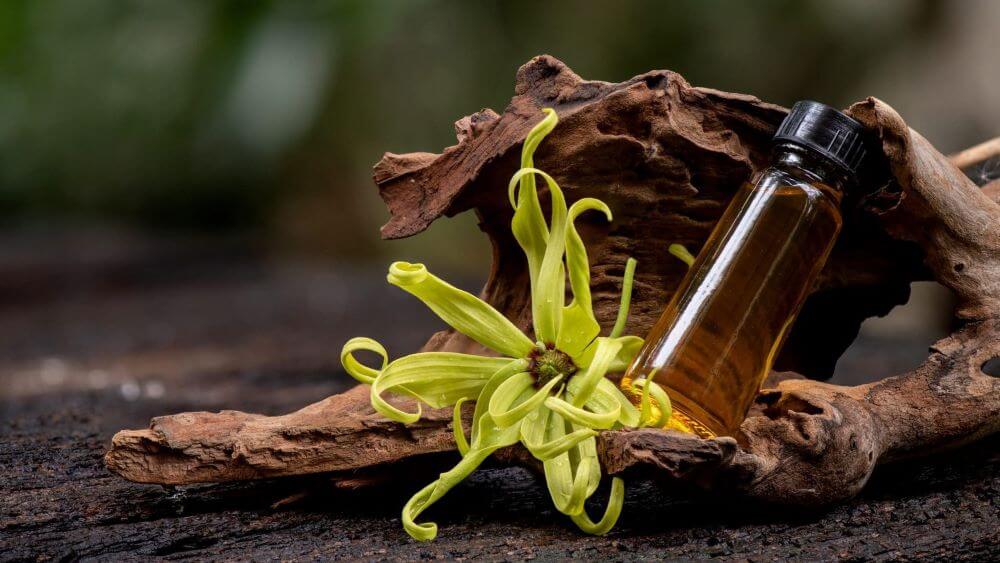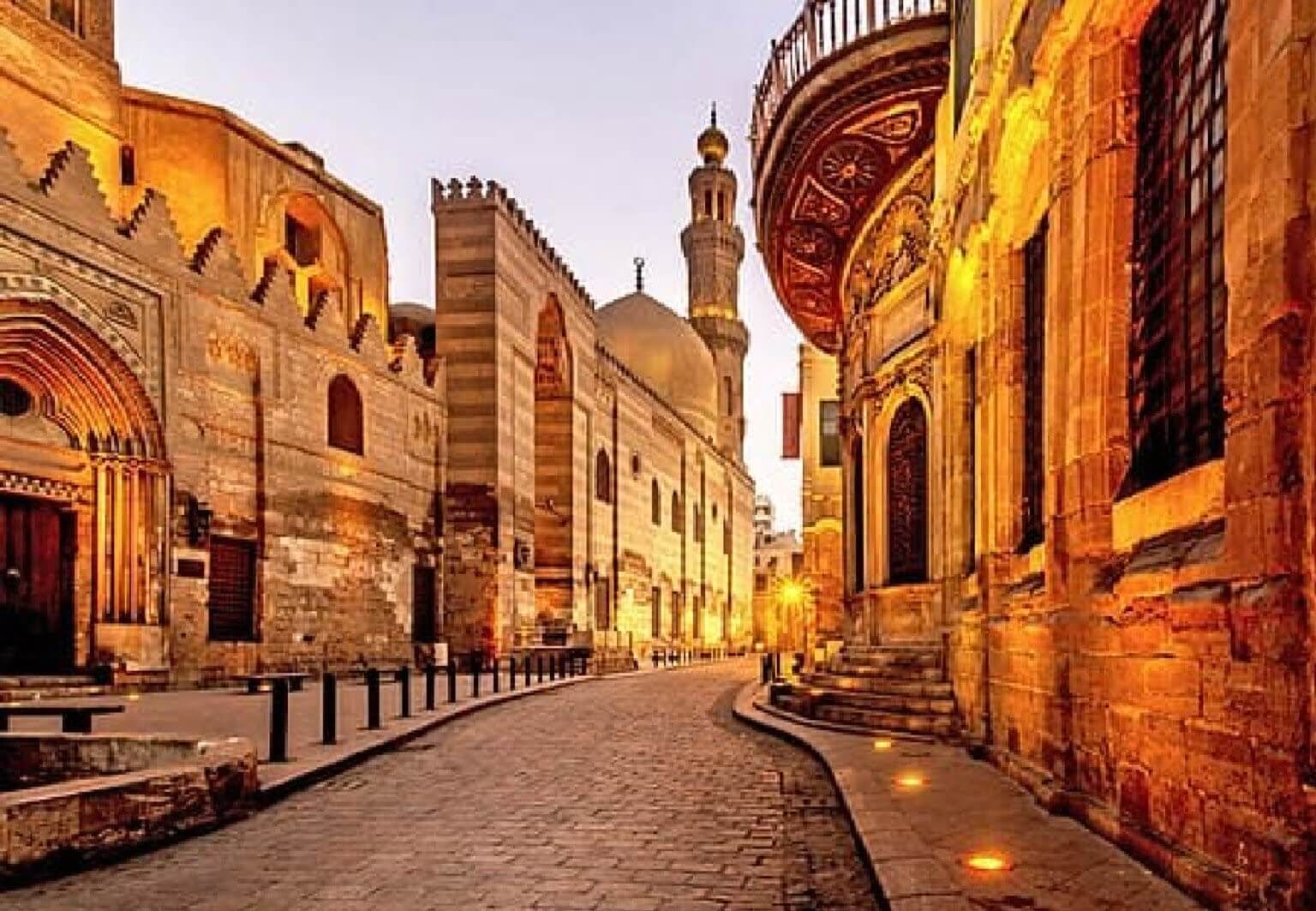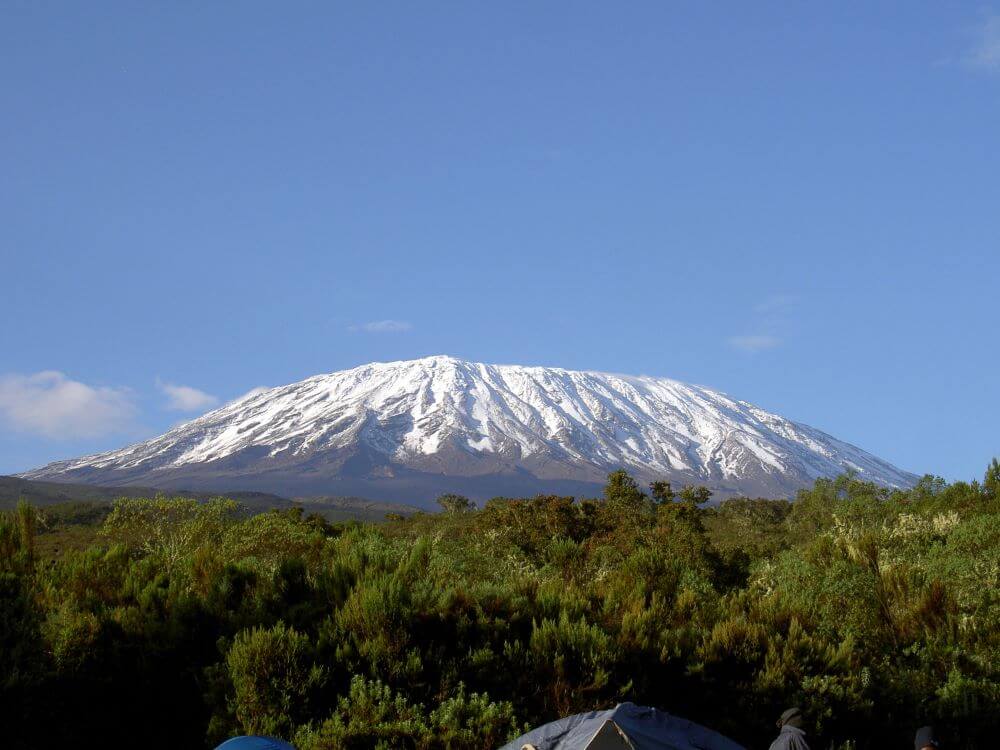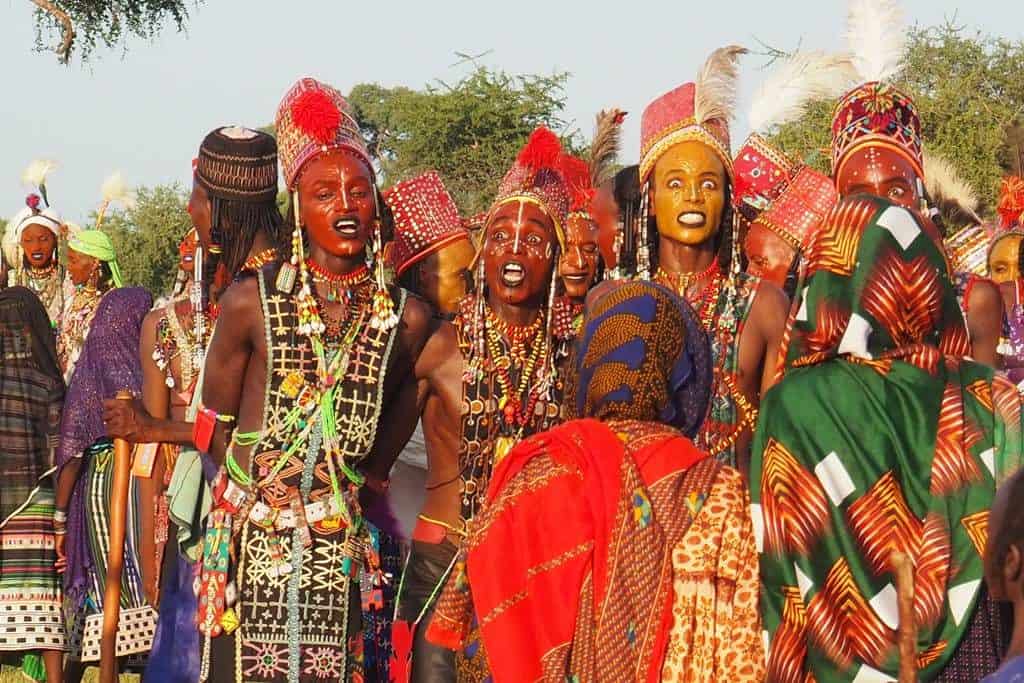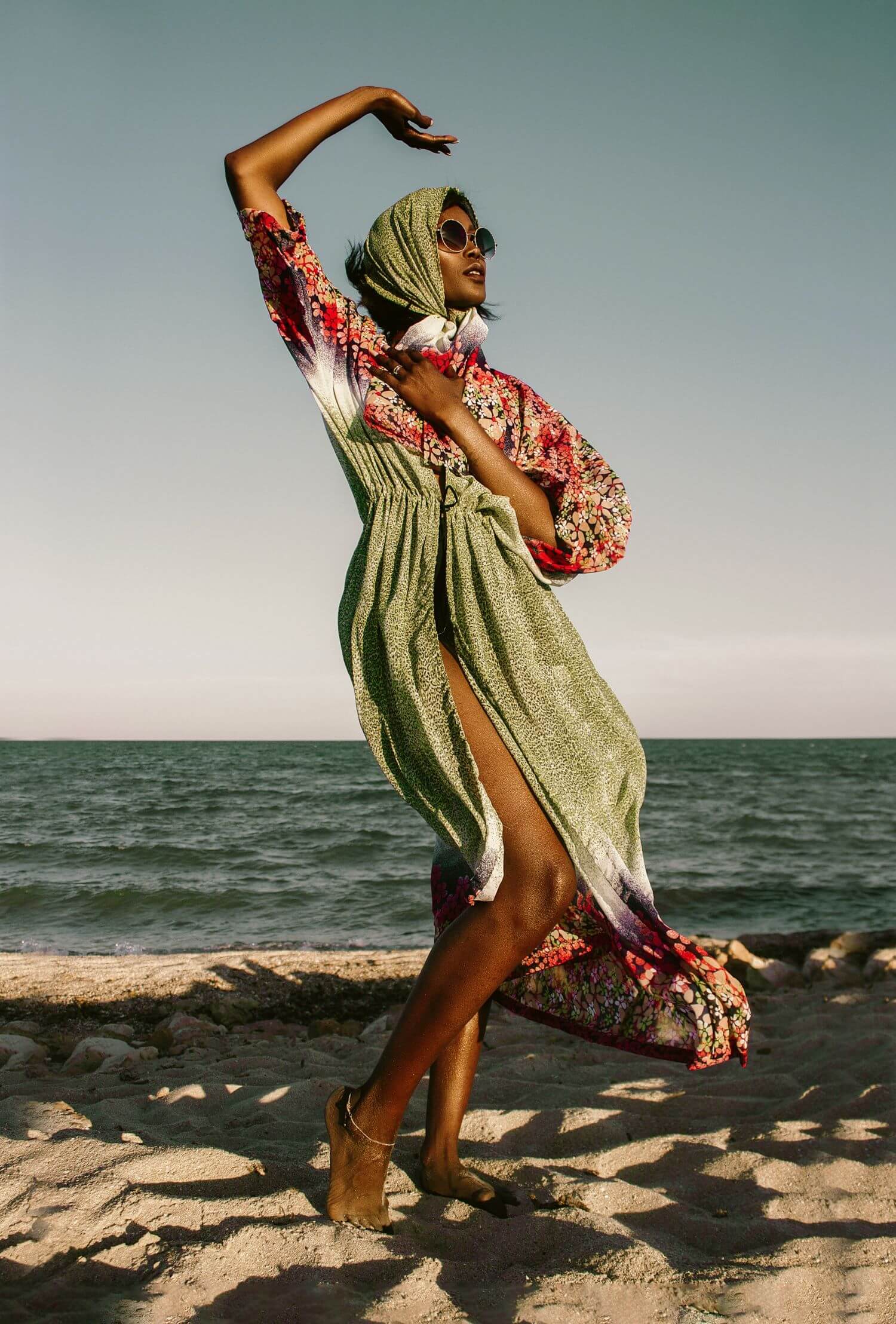Mount Kilimanjaro is a dormant volcano located in Kilimanjaro Region of Tanzania. It has three volcanic cones: Kibo, Mawenzi, and Shira. It is the highest mountain in Africa and the highest single free-standing mountain above sea level in the world at 19,341 ft and 16,100 ft above its plateau base. It is the highest volcano in Africa and the Eastern Hemisphere.
Kilimanjaro is the fourth most topographically prominent peak on Earth which is the height between the summit and the lowest contour line circling the mountain. There are good reasons many climbers value a mountain’s prominence as much as its height. Listing mountains by prominence, instead of total elevation, helps avoid re-counting one mountain with several peaks. It also means the summit experience is more rewarding for the climber; views from the most prominent peak in the area are guaranteed to be better. Only Everest, Aconcagua (South America’s entry for the Seven Summits) and Mount McKinley (North America’s for the same) rank higher.
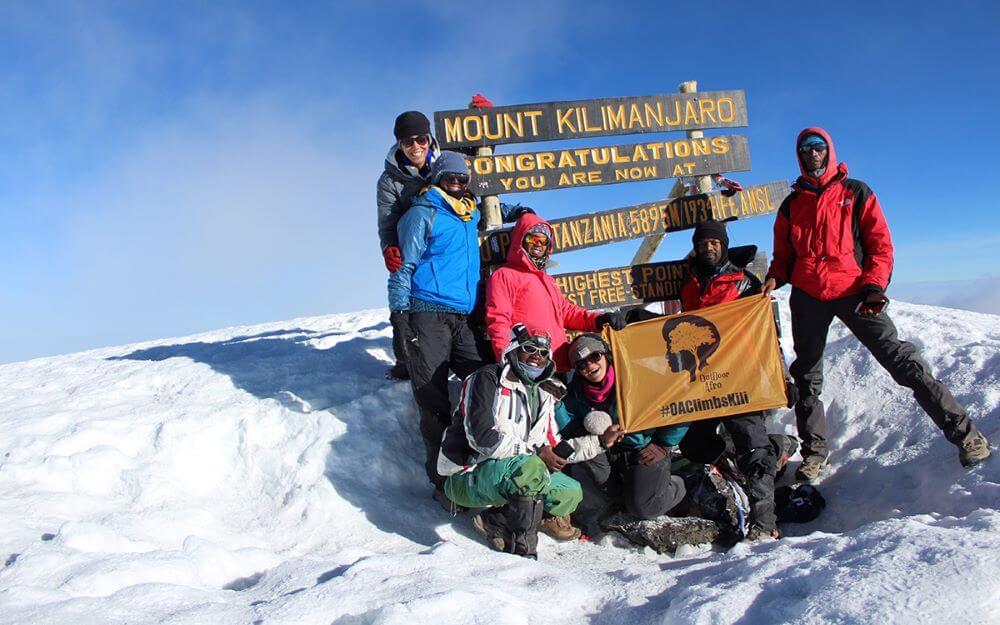
For “peak baggers”—climbers that essentially “collect” summits on specific lists, or of a certain type—that makes Kilimanjaro an appealing mountain to climb.
Offcourse you don’t need to be a peak bagger to appreciate Kili’s spot on this exclusive list; just about anyone would be proud to say s/he climbed “the fourth most prominent mountain in the world!”
It is part of Kilimanjaro National Park, one of East Africa’s best safari destinations where one can explore and catch a glimpse of wildlife at the foothills of Kilimanjaro. The Park covers an area of 75,575 hectares in Moshi town and was declared a game reserve in the early twentieth century. The Park is home to primates, antelopes, elephants, bush back and other animals.
The best months to climb Mount Kilimanjaro is January to March and later in September. This gives the greatest chance of warmer weather and less rain.
Kilimanjaro ranks amongst the might wonders of the world and a lifetime of memories, especially reaching the summit.
The Experience of the Climb
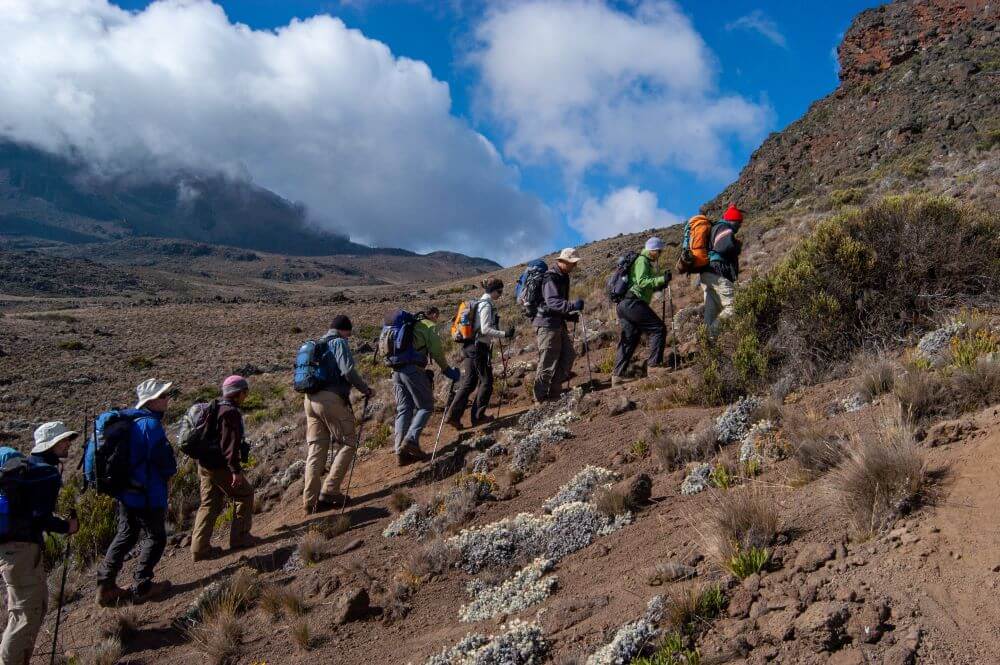
You do not have to be a mountain climber to conquer Mount Kilimanjaro, as anyone can climb. No mountain climbing equipment or prior climbing experience are required. All you need are a good hiking boots and the determination to make it to the top. At over 19,000 feet, no one has to tell you that it is no walk in the park…it is grueling due to both the weather conditions and the terrain. But once you reach the summit, you can be assured that this achievement and experience is one that will last a lifetime.
The journey starts at the small Kilimanjaro International Airport by Kilimanjaro-Experience drivers who take you to your hotel for a thorough pre-climbing briefing. There, your gears will be checked to ensure you are properly equipped and ready. You will be advised if anything needs to purchase. It is suggested you arrive a day in advance, just in case need something. This also ensures you are well rested before the trip.
Groups depart every Friday, and scheduled departures on Lemosho route every other Thursday. For private groups, treks can be arranged for any day with custom packages.
A ‘scheduled departure’ is suggested because it is the most cost effective and is a confirmed departure date for a specific route with a group of 5 to 10 persons.
Kilimanjaro-Experience offers scheduled group departures for Marangu, Lemosho and Machame routes and can guide private groups on any of the other routes.
On the Mountain
There are no hotels on Mount Kilimanjaro. There are no cable cars to the top, no paved paths and no running water.
For people who have no camping experience, it might be a new adventure to sleep in tents on sleeping mats and in sleeping bags. Only on the Marangu route will you stay in fixed huts. However, the other routes are camping routes and porters will set up the tents before you arrive at the next campsite. In fact, porters carry the bulk of the heavy stuff, not only tents.
You can expect severe variations in temperature. Be prepared for hot and humid conditions in the forests and for below-freezing conditions, ice rain and wind at the higher altitudes. You should wear thermal underwear and hiking boots, warm thick gloves and good quality, thermal socks.
In total, you will pass through five different climate zones on the mountain, including lush rainforest, low moorland, alpine desert and the famous arctic summit. Kilimanjaro is feted for its incredible biodiversity.
Some routes up to the summit are more remote and less frequented, but the most popular routes can be busy, and you will certainly see other groups along the way and at camp. Having said that, it’s a big mountain and it never feels too crowded.
Your body might do strange things. The altitude will put stress on all your systems, and you might doubt your sanity in attempting this stupendous daring exercise. It might be too cold to change clothes or wash. Your head might hurt on summit night and your lungs will yearn for oxygen or a cigarette. You will have to walk very slowly, keeping a slow rhythm. “Pole pole”, slowly slowly, as they say here in Tanzania. This will be your mountain mantra.
Breathe and carry on. Slowly. It will be worth it.
Sleeping
We recommend you bring your own sleeping bag, though they can be rented if necessary.
Eating and drinking
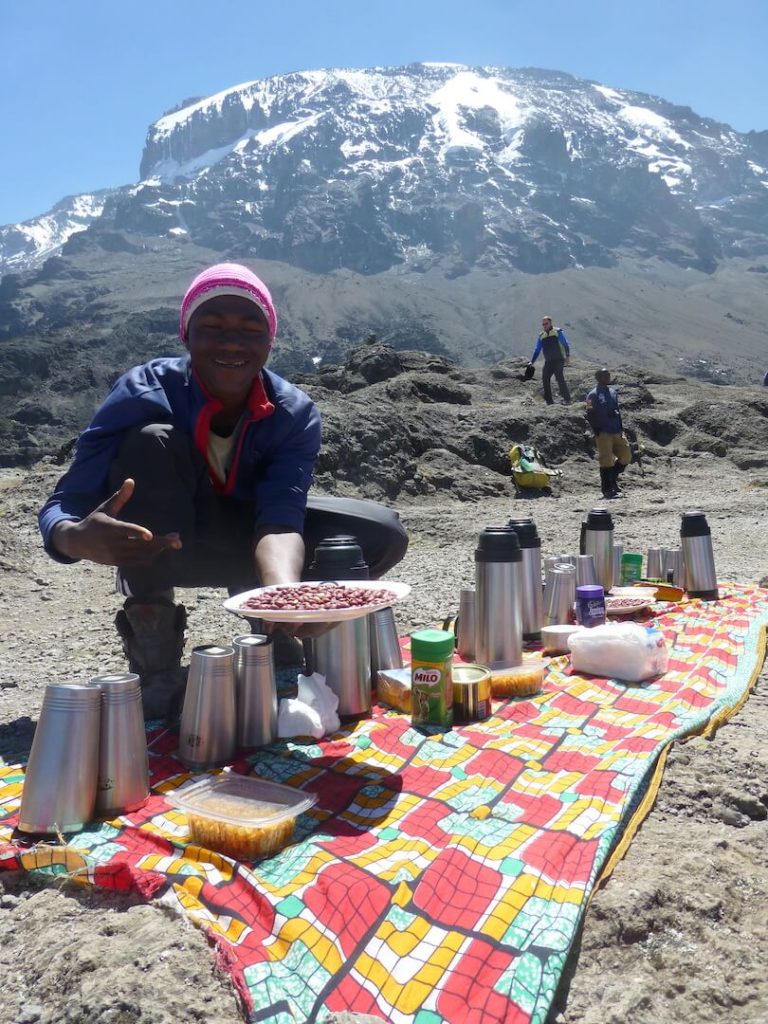
Porters and cooks carry all catering supplies and food. You can bring your own snacks. This is advised to help combat fatigue and symptoms of altitude sickness. High sugar, high fat and high energy snacks are best, such as chocolate bars, energy bars, peanuts and biscuits. We recommend you bring at least two snacks for each day spent on the mountain.
You will eat well. All meals are catered for by cooks and porters who carry utensils, pots, food and gear. You will drink well. Porters will fetch water from streams where after it is filtered and boiled to purify and served as tea, coffee or hot chocolate. You will have to drink at least three liters of water a day to stay hydrated enough to reduce symptoms of altitude sickness. Cold drinking water for the day will also be provided by the porters each morning.
For breakfast you will be served eggs, sausages, porridge and bread. Extras include jam, peanut butter and margarine. Lunch is usually a packed affair including a boiled egg, a sandwich or roll, a piece of chicken, biscuits, fresh fruit and a carton of juice. Supper is a hot meal consisting of soup, meat, vegetables, starch and fruit. We provide a mess tent with table, chairs and proper cutlery. Alcohol is not served, but every meal is accompanied by tea, coffee and hot chocolate. Vegetarians and those with food allergies can be catered for with advance notice, as well as catering for Kosher and Halaal diets. A designated waiter and his assistant will cater to all your needs at mealtimes.
Ablutions
There are no showers on Kilimanjaro and the water in the streams is refreshingly cold. Each morning and evening you will be provided with some warm water to wash your face and hands. The toilets are very basic. These ‘long drop’ toilets are housed in wooden structures at each campsite. On private departures on camping routes, mobile toilets are included in the cost. Toilet paper and wet wipes are essential for personal hygiene.
Climb experience provided by Kilimanjaro Experience
Summit Caption (image of people at the top of the mount): 11 members from the first all–African American team to tackle the peak says the highlight of their climb was not reaching the summit, but instead what has lingered in their minds since their return is the rare experience of climbing and connecting with people who looked like them
GETTING THERE
Time to Climb: It takes five to nine days in order to reach the Mount Kilimanjaro Summit and then descend to the finishing point.
Tour Operators
Climbing requires choosing a great tour company to arrange and guide you on your excursion. There are a variety of companies to choose, and sometimes finding a smaller operator could provide for a unique experience, especially if you are interested in learning more about the culture. Tanzania offers a wonderful experience from budget conscious to luxury travelers. Ask your tour operator what all are included in the safari to get a clear picture of the value. Before booking with a company, check on reviews of the company online. Below is a suggested list.
Kilimanjaro Experience
If it is your dream to summit Kilimanjaro, Kilimanjaro-Experience, a Tanzanian-registered and fully licensed company, based in Arusha, can assist in an unforgettable Kilimanjaro trek, climb and safari.
Phone: +27 (0) 21 276 0501
Phone +255 (0) 786 961 503 (Emergency Inquiries Only)
contact@kilimanjaro-experience.com
Earth’s Edge
Earth’s Edge is offers high altitude trekking, mountaineering, and with a signature tri-adventure expedition in some of the most stunning locations in the world.
Phone:
Ireland: +353 1 5320 869
UK: +44 1 905 57 0391
USA: +1 508 644 8365
Email: support@earths-edge.com
Website: earths-edge.com
Achieve Global Safaris
Phone: +256 392 177 904
Email: info@ugandasafaristours.com
Website: www.ugandasafaristours.com
Focus East Africa Tours
Phone: +255 764 687 041
Email: info@focuseastafricatours.com
Website: www.focuseastafricatours.com
PACKING LIST
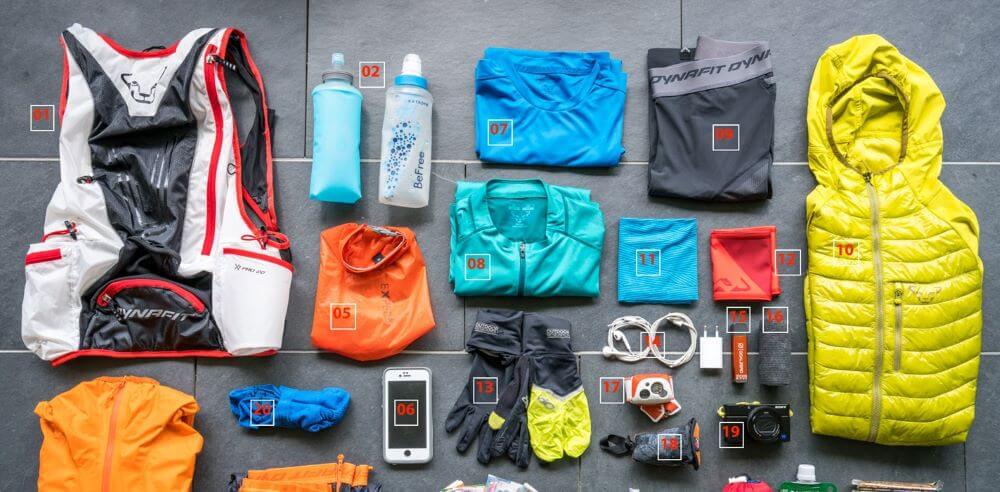
For a full packing list visit:
https://www.adventurealternative.com/more-information/kilimanjaro-packing-list


